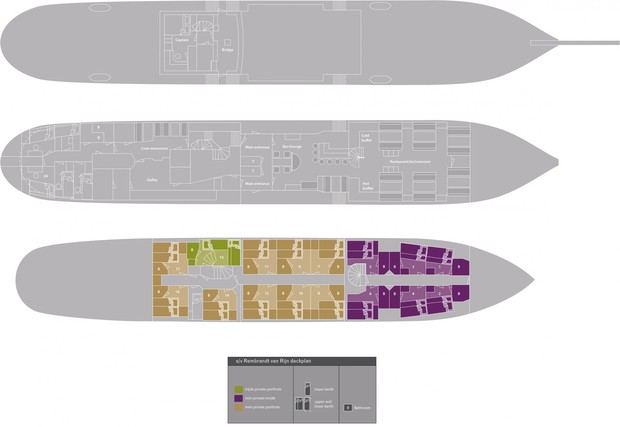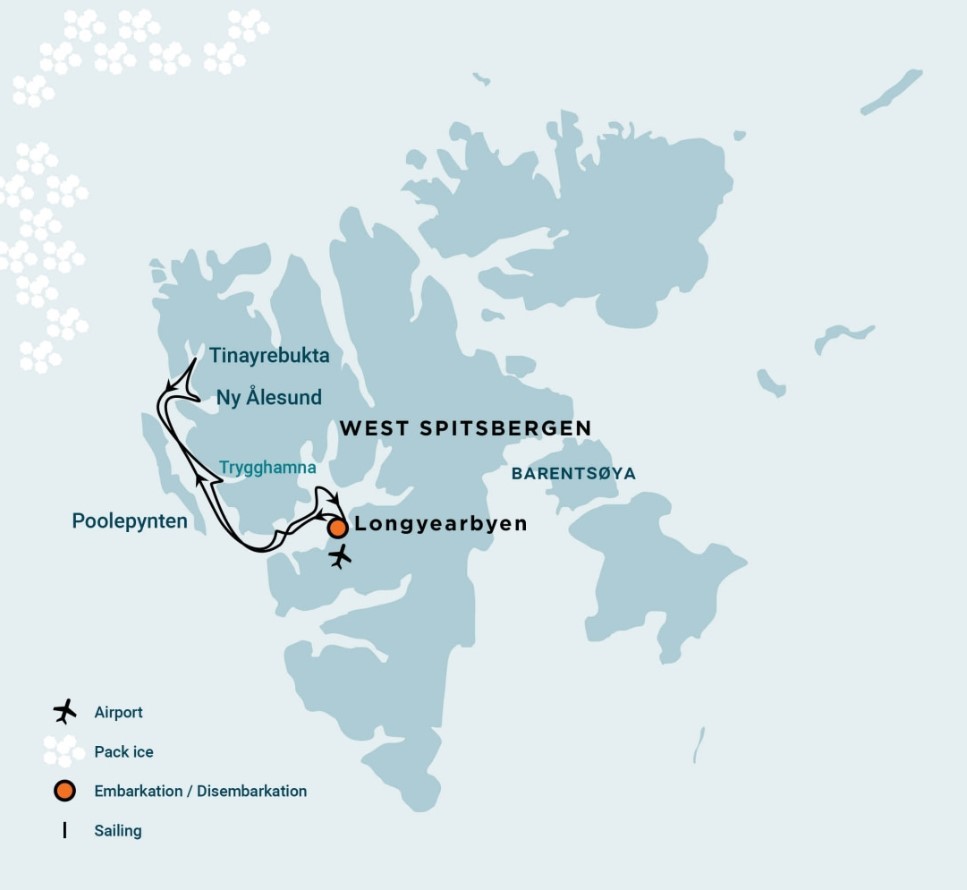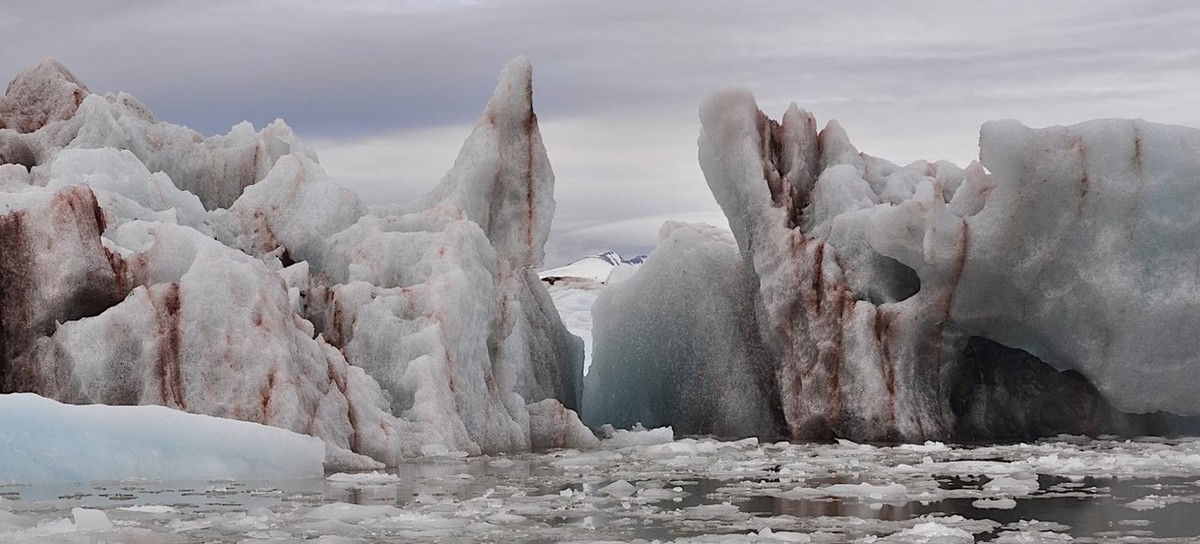
At the end of a long Arctic winter, spring is starting to awaken. The climate, however, still clings to the cold: snow-covered mountains, snow-swept shores, temperatures around –4° C (25°F). It’s a good time to experience the last of winter scenery, and with a little luck, also see some polar bears, walruses, and seals.
- Snowshoeing - Explore your way inland from the Polar shorelines with a wide variety of snowshoeing expeditions built for everyone.
- Hiking - Explore the polar coastlines and inlands with a wide variety of invigorating hikes designed for all hikers to enjoy
- Ny London - A former mining settlement in the Svalbard archipelago’s Arctic island of Blomstrandøya
- Arctic Fox - Small but sturdy, these members of the canidae family can withstand some of Earth's coldest temperatures
- Arctic Tern - Among the most nomadic birds on the planet, these sun-loving tourists summer twice a year during their ambitious routes
Prices quoted here are often dependent on currency fluctuations. Please check with (01432 507450 or info@small-cruise-ships.com) for the very latest price, which may well be cheaper than the one advertised here.

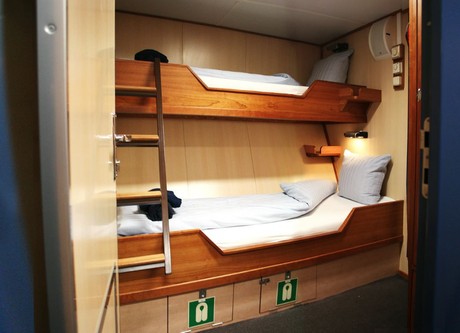

You touch down in Longyearbyen, the administrative center of Spitsbergen, the largest island of the Svalbard archipelago. Enjoy strolling around this former mining town, whose parish church and Svalbard Museum make for fascinating attractions. Though the countryside appears stark, more than a hundred species of plant have been recorded in it. In the early evening the ship sails out of Isfjorden, where you might spot the first minke whale of your voyage.
In the evening you sail for Trygghamna, where you see the remains of a 17th-century English whaling station and 18th-century Pomor hunting station, both of which you can visit the next morning.
From Trygghamna you walk to Alkhornet, a large seabird cliff where the birds are scouting out breeding places. Below the cliffs is a common place to spot Arctic foxes, and you may also see reindeer grazing on the lush vegetation if there’s not too much snow.
You head north for Kongsfjorden and Krossfjorden. The landscape is likely to show signs of winter, the crags and slopes still blanketed with snow.
Here there are rich opportunities for snowshoeing – we provide the snowshoes – and visiting places of historic interest: Ny London, where you can see the remains of early 20th-century marble mining, and Ny Ålesund, the northernmost community in the world.
There are also research stations and the famous anchor mast of the dirigible Norge, which took the first flight across the North Pole to Nome, Alaska in 1926. Krossfjorden offers views of colossal glaciers and lofty mountain peaks, but ultimately the extent of fjord ice dictates the itinerary here.
Cutting south between the main island of Spitsbergen and Prins Karls Forland, you may encounter walruses at Poolepynten, a common haul-out site.
You also have views of St. Johnsfjorden, near Gaffelbreen. The winter ice may not have loosened its grip on the water here, and seals (ringed and bearded) could be numerous in the area.
You now double back into Isfjorden and venture to Ymerbukta, possibly embarking on a walk in this mountainous area. Here you find an expansive tundra with its own avifauna, depending on when spring arrives, as well as spectacular geological formations along the coast.
Further northeast, near Ekmanfjorden, you have the chance for another hike. Common to this area are numerous glaciers that terminate near or in the sea. In Gipsvika you can go on shore near the cliff of Templet, a mountainous location of eroded sedimentary rock from the Upper Carboniferous period – around 290 million years ago.
Every adventure, no matter how grand, must eventually come to an end. You disembark in Longyearbyen, taking home memories that will accompany you wherever your next adventure lies.
At the end of a long Arctic winter, spring is starting to awaken. The climate, however, still clings to the cold: ice-covered mountains, snow-swept shores, temperatures around –4° C (25°F). It’s a good time to experience the last of the winter scenery, and with a little luck, also see some polar bears, walruses, and seals into the bargain. Bird note: It is still somewhat quiet on the cliffs, as this time of year the cliff-nesting birds are only just arriving to pick out their breeding places. By May all the nesting birds will have arrived, and the breeding will take place later in June. All itineraries are for guidance only. Programs may vary depending on local ice, weather, and wildlife conditions. Landings are subject to site availabilities, permissions, and environmental concerns per AECO regulations. Official sailing plans and landing slots are scheduled with AECO prior to the start of the season, but the expedition leader determines the final plan. Flexibility is paramount for expedition cruises, and willingness to compromise on comfort is a basic requirement on board a historic sailing vessel. Important information about the use of sails: The vessel is equipped with sails to be used in good conditions (based on open sea, water depth, wind, and time allowance), but the use of sails is not guaranteed. The captain decides whether to use the sails or the engine. If sails are used, the crew will operate them. Guests must follow the safety instructions of the team. The average cruising speed for s/v Rembrandt van Rijn is 6.5 knots.
Rembrandt van Rijn
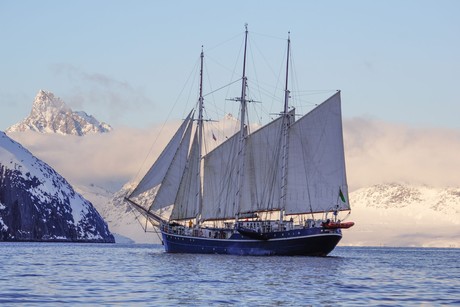
| Length | 56 metres |
|---|---|
| speed | 9 knots |
| Cabins | 16 |
S/V ‘Rembrandt Van Rijn’ was originally built as a herring lugger. The vessel was rebuilt as a three-masted passenger sailing schooner in The Netherlands in 1994 and sailed in Spitsbergen (1994 – 1996) and in Galápagos (1998 - 2001). The vessel underwent a complete rebuilding and refurbishment program in 2011. The communication and navigation equipment has been completely renewed according to the latest SOLAS regulations.
The Rembrandt van Rijn measures 56 meters in length (168 ft.), 7 meters in width and has a draft of 2, 5 meters.
•The maximum engine speed is 9 knots
•She has an experienced crew of 12 on board including two tour guides
•The ship can accommodate a maximum of 33 passengers in 16 cabins
•1 Triple Private cabin with porthole (with shower and toilet)
•6 Twin Private Inside cabins (with shower and toilet, no porthole)
•9 Twin Private cabins (with shower and toilet and porthole)
•The general interior public areas include a spacious restaurant area so that all meals can be taken together as well as separate bar area and reading table area
•There is room to relax, read and socialize
•The ship is well suited for expedition cruising among small islands and offers excellent open deck viewing areas, even when under sail. The two inflatable rubber crafts (zodiacs) enable landing and wildlife viewing opportunities in otherwise inaccessible areas.
